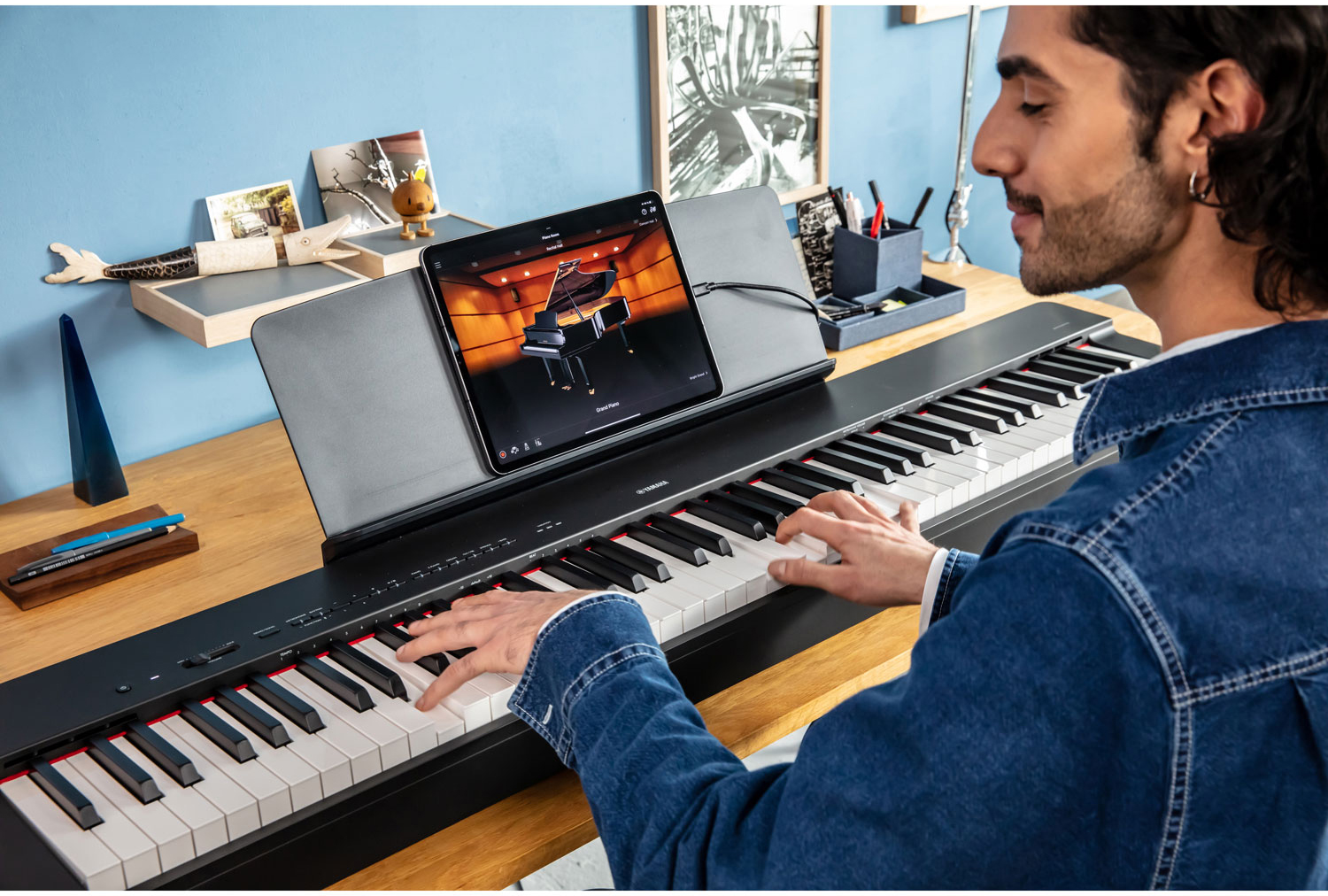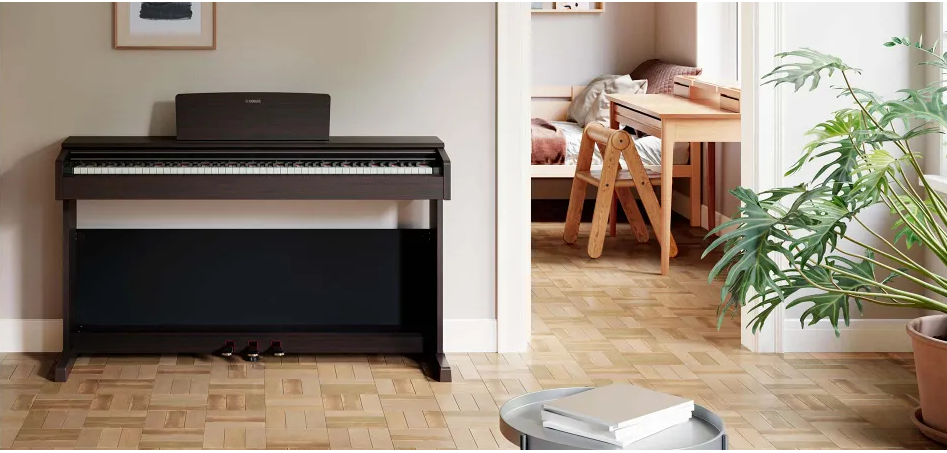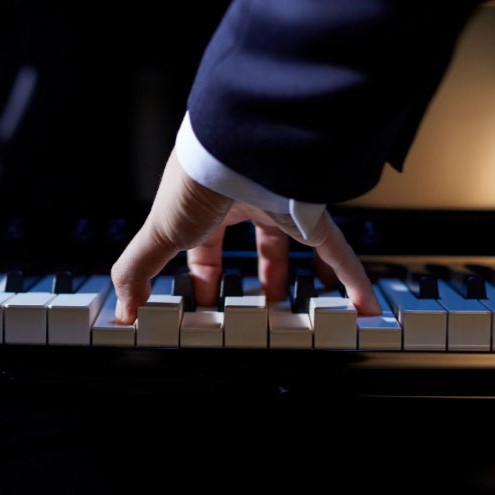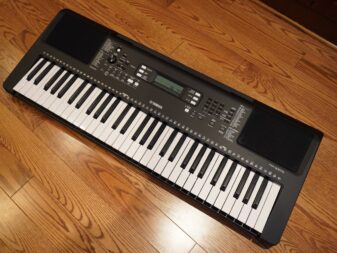
Digital piano and electric keyboard buying guide
Share
If you’ve already determined that an acoustic keyboard isn’t quite right for you, venturing into the world of electric pianos and keyboards can open up a new world of possibilities. Whether you’re just starting your musical journey or you’re an experienced musician looking to upgrade, buying an electric keyboard involves a lot of considerations. This comprehensive piano buying guide will help you navigate the important factors and find the perfect keyboard for your needs.
Table of contents:
- Difference between electric keyboards and pianos
- Types of electric keyboards
- Key features to consider
- Choosing the right keyboard for your level
- Electric keyboard accessories
But first, electric keyboard vs digital piano
If you’re not sure whether you should buy an electric keyboard or a digital piano, it’s important to understand the differences between them. Electric keyboards generally offer a variety of sounds and features suitable for various music genres and may include learning tools, making them ideal for beginners and hobbyists. On the other hand, digital pianos are designed to closely mimic acoustic pianos with weighted keys and a focus on piano sounds, catering more to pianists seeking a traditional feel. Your decision should be based on your specific musical goals and preferences. Here are some of the key differences in a nutshell:
| Feature | Electric keyboard | Digital piano |
|---|---|---|
| Keys | Usually 61 to 76 keys | Typically 88 keys like an acoustic piano |
| Key Touch | Lighter touch, often not weighted | Weighted keys to mimic an acoustic piano |
| Portability | Generally lightweight and portable | Less portable due to heavier build |
| Sound Variety | Offers a wide range of sounds and effects | Primarily focuses on replicating piano sounds |
| Maintenance | Minimal maintenance required | Minimal maintenance, but more than keyboards |
| Price | Usually less expensive | Typically more expensive than keyboards |
| Use Case | Ideal for beginners and those interested in a variety of musical styles | Best for those focusing on piano-centric music and skill development |
| Pedals | Often requires additional purchase | Usually includes at least one built-in pedal |
| Speakers | Built-in speakers are common | Typically includes high-quality built-in speakers |
If you’d like to learn more, check out our detailed article on the topic: Differences between digital pianos versus electric keyboards.

Types of electric pianos and keyboards
When selecting a digital piano or keyboard, understanding the different types can help you make an informed choice. Here’s a simplified overview of common categories you’ll find at Best Buy:
Portable or electric keyboards
Electric keyboards are lightweight and often come with a variety of features, including built-in speakers and a range of tones. These features offer immediate playback and enjoyment without the need for additional equipment. They also offer a wide range of tones and sound effects, making them incredibly versatile for various musical genres and styles. This versatility is particularly beneficial if you’re a beginner and still exploring your musical preferences and abilities.
A lot of electric keyboards have user-friendly interfaces, with some models offering instructional features like follow-along lessons or light-up keys to aid in learning. This makes them an excellent choice for those who are new to playing music, providing a practical and enjoyable way to develop musical skills. Whether for a beginner needing a straightforward, effective instrument for learning or for a musician on the go, portable keyboards represent a remarkable fusion of convenience, functionality, and musical exploration.
Digital pianos
Digital pianos, often referred to as console keyboards, are crafted to emulate traditional upright pianos both in aesthetic and feel. These instruments are notably more robust in size and weight compared to the portable keyboards. The digital pianos offer a solid, stationary fixture for any home or studio. They typically feature weighted keys, which mimic the hammer action of acoustic pianos, providing a tactile, responsive playing experience that appeals to both novices and seasoned players alike.
This realistic touch response is particularly beneficial for beginners and intermediate musicians who aim to develop proper finger strength and technique. Some digital pianos come equipped with a variety of built-in sounds and features, such as different piano tones, built-in metronomes, and recording capabilities, which makes them versatile instruments suitable for a range of musical styles and practices.
Due to their combination of authentic playability and modern features, digital pianos are a popular choice among music enthusiasts. Whether you are using for practice, performance, or leisure, a digital piano is a valuable tool to enhance your musical journey.
Synthesizers and MIDI controllers
Music technology has advanced significantly, offering a multitude of options for musicians and producers. Among these, Synthesizers and MIDI controllers are pivotal for modern music production.
Synthesizers are incredibly versatile instruments that generate audio signals to create unique sounds and timbres. They enable musicians to experiment and craft sounds that can’t be produced by traditional instruments, making them vital for genres like electronic, pop, and experimental music. With various types, including analog, digital, and software, synthesizers offer endless possibilities for sound customization.
MIDI controllers, on the other hand, do not generate sound on their own but serve as a bridge between human input and software or other musical equipment. They send performance information, typically through MIDI data, to other devices which then generate sound. Common types include keyboards, drum pads, and foot controllers, each tailored for specific performance needs. They are essential tools for integrating traditional musical skills with modern digital workflows, enabling the creation of complex productions that can include multiple instruments and sounds controlled from a single interface.
Both synthesizers and MIDI controllers are tools of the trade for experienced musicians and individuals who are deep into music production. They enable the creation of professional-grade music, offering the flexibility required in today’s diverse musical landscape.
Key features to consider
When selecting a digital piano or electric keyboard, it’s critical to evaluate certain features that can directly impact your playing experience and performance. Whether you’re a novice eager to embark on your musical journey or a professional musician fine-tuning your setup, each characteristic fulfills a specific role. Here’s a breakdown of essential features and how they resonate in real-world scenarios:
Touch Sensitivity
Touch Sensitivity influences how the keys respond to the various pressures applied during playing. This feature allows you to expressively control the volume and tone of the music. For instance, playing the delicate passages would require a keyboard that can respond sensitively to light touches.
Types of keyboard actions
Type of keyboard action refers to the mechanism and feel of the keys when they are pressed. The action affects how much the keys feel like those of an acoustic piano. There are the three main types of keyboard actions:
- Weighted action: Weighted keys are built to mimic the hammer mechanism found in acoustic pianos, providing a heavier touch in the lower keys and a lighter touch in the higher keys. They are ideal for those who wish to practice piano with a realistic feel.
- Semi-weighted action: Semi-weighted keys offer some resistance and are typically lighter than fully weighted keys, which can be suitable for both beginners and experienced players who do not require the exact feel of an acoustic piano but still appreciate some resistance.
- Unweighted (synth) action: Keyboards with synth action are generally light to the touch and offer little to no resistance, mimicking the feel of an organ or synthesizer rather than a piano.
Samples and polyphony
The quality and variety of samples determine how closely a digital piano or keyboard can emulate the sound of an acoustic piano and other instruments. Polyphony, the number of notes a keyboard can produce simultaneously, enhances the richness of the sound. More complex compositions demand high polyphony to maintain all notes sounding as intended without drop-offs.
Connections
Connections such as MIDI, USB, and audio outputs expand the functionality of the instrument, allowing it to interface with computers and recording equipment. This is particularly important for those who might layer tracks in a digital audio workstation or for performers using backing tracks during live performances.
Sound quality
Sound quality depends largely on the digital sampling and speaker system of the instrument. High-quality, realistic sounds are crucial when performing in settings where the authenticity of the piano tone is paramount, such as in jazz ensembles where pianists need to blend seamlessly with other acoustic instruments.
Portability
Portability relates to how easily you can move the instrument. For those who frequently play at different venues, a lightweight and compact keyboard is essential. This feature is crucial for touring bands or mobile music teachers who need to transport their instrument routinely.
Additional features
Additional features might include built-in learning tools, diverse instrumental voices, and recording capabilities. These can significantly enhance your practice and performance experiences. For example, a keyboard with a loop function and multiple instrument sounds can be invaluable for a solo performer looking to create complex, layered performances live.
How to choose the right keyboard for your level?
Are you planning to use the keyboard for personal enjoyment, public performances, or professional recording? Make sure the keyboard you choose aligns with your plans and your skill level. Here are some suggestions:
- Beginners: Portable or electric keyboards with touch sensitivity are great for young learners. Digital pianos with weighted keys offer a more authentic experience and are ideal for those seeking a long-term instrument.
- Intermediate players: Consider upgrading to a digital piano if you started with a portable keyboard. If you need a portable option, a lightweight keyboard with additional features like built-in audio interfaces may suit you.
- Advanced players: Stage pianos are perfect for live performances, with professional-quality sounds and robust connectivity options. If you’re interested in music production, explore synthesizers and MIDI controllers.
Electric keyboard accessories
When buying an electric keyboard, the experience can be greatly enhanced by selecting the right accessories. Here are some essential keyboard accessories to consider:
1. Keyboard stand
A sturdy keyboard stand is crucial for proper posture and comfort while playing. Opt for an adjustable stand that can accommodate different heights and keyboard sizes. This accessory is vital for both beginners and advanced players to ensure stability and reduce the risk of damage to the instrument.
2. Bench
Invest in a comfortable bench to enhance your practice sessions. A good bench can help maintain proper posture and reduce fatigue during long hours of playing. Look for options that are height-adjustable and padded for added comfort.
3. Pedals
Pedals add depth and expression to your playing. A sustain pedal is essential for simulating an acoustic piano experience. Additionally, consider a soft pedal or an expression pedal for more advanced dynamics and control in your music.
4. Headphones
For private practice without disturbing others, high-quality headphones are essential. They can also be useful for detailed audio monitoring while recording. Headphones should provide clear, accurate sound reproduction and be comfortable to wear for extended periods.
5. Keyboard cases, covers, and bags
Protecting your keyboard during storage or transport is imperative. A durable keyboard case or bag will shield your instrument from dust, moisture, and impact. Choose between soft cases for lighter travel and hard cases for maximum protection.
6. Music stand
If your keyboard doesn’t come with a built-in music stand, purchasing an external music stand can be very useful. It holds your sheet music or digital devices securely, which is excellent for reading music or tutorial videos while playing.
7. Power adapter
Ensure you have a reliable power adapter compatible with your keyboard model. A spare adapter can also be handy to keep in your gig bag or rehearsal space as a backup.
By considering these essential accessories, you can ensure a more enjoyable and effective experience with your electric keyboard. Now that you’ve gathered all the essential information, it’s time to find the instrument that best suits your needs. Explore a wide range of electric keyboards and pianos at Best Buy. Whether you’re buying your first keyboard or upgrading to a full-fledged digital piano, there’s something for everyone. Happy music-making!























